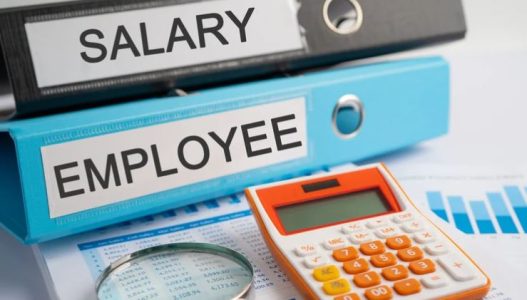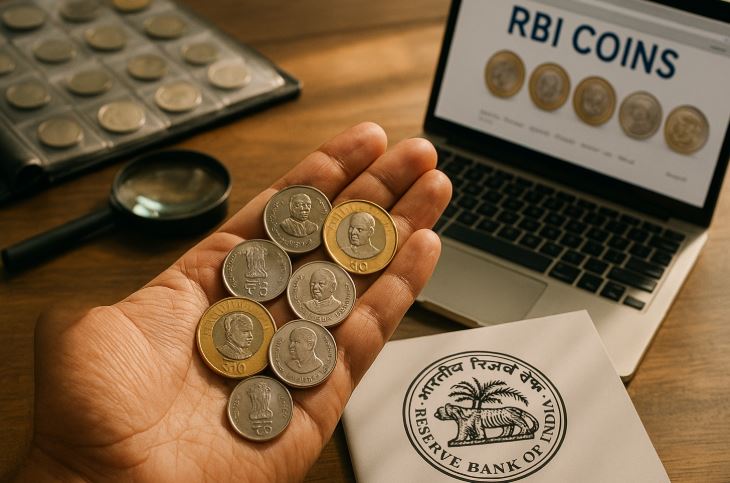Have you ever wondered why government employees and pensioners receive periodic salary increments even without a promotion? This happens due to a component in their salary known as Dearness Allowance (DA).
In 2025, with inflation constantly fluctuating, DA plays a crucial role in helping employees manage the rising cost of living.
Dearness Allowance is a key part of salaries for government employees, public sector workers, and pensioners.
It is revised regularly to ensure that their purchasing power remains stable despite economic changes. But how is it calculated? Who is eligible? How does it affect taxes and retirement benefits?
In this guide, we will explore everything about Dearness Allowance in India, including its calculation, types, impact on salary, taxability, and latest updates for 2025.
What Is Dearness Allowance in Salary?

Dearness Allowance is a cost-of-living adjustment provided to government employees, public sector workers, and pensioners to help them cope with inflation. It is revised periodically by the government to balance the impact of rising prices on salaries.
The importance of Dearness Allowance lies in its ability to:
- Maintain the purchasing power of employees despite inflation
- Provide financial security to pensioners and retired government employees
- Ensure a fair wage structure in both urban and rural areas
- Help in economic stability by adjusting salaries in proportion to inflation
As of 2025, the government revises DA rates twice a year, in January and July, based on changes in the Consumer Price Index (CPI). This ensures that employees do not experience a decline in their standard of living due to rising costs.
The formula for calculating DA considers the CPI for Industrial Workers (CPI-IW), which reflects changes in prices of essential goods and services. The percentage increase in DA is determined by the change in CPI over a base period.
Who Is Eligible to Receive Dearness Allowance in India?
Dearness Allowance (DA) is not applicable to all employees. It is provided only to government employees, PSU workers, and pensioners to help them adjust to inflation.
Eligible Beneficiaries
- Central Government Employees: Employees working under ministries, departments, and autonomous bodies of the central government.
- State Government Employees: Employees working for state government departments and agencies.
- Public Sector Undertaking (PSU) Employees: Workers in government-owned corporations and companies.
- Pensioners: Retired employees who receive a pension from the government.
- Family Pensioners: Dependents of deceased government employees who receive a family pension.
Who Is Not Eligible for DA?
- Private sector employees: Their salaries are adjusted differently for inflation.
- Self-employed individuals: They do not receive structured salary components like DA.
- Contractual workers: Unless their contract specifies DA benefits.
How to Check DA Eligibility?
- Employees can check salary slips to see if DA is included in their salary.
- Pensioners can verify DA details in their pension statements.
- Government notifications and official circulars announce DA hikes and eligibility criteria.
Understanding DA eligibility helps employees and pensioners plan their finances effectively.
How Is Dearness Allowance (DA) Calculated?

The calculation of DA is based on a fixed formula that considers the All India Consumer Price Index (AICPI). The formula varies depending on whether the employee belongs to the Central Government, State Government, or Public Sector Units (PSUs).
Formula for Central Government Employees:
DA (%) = {(Average CPI-IW for last 12 months – Base Index) ÷ Base Index} × 100
Formula for Public Sector Employees:
DA (%) = {(Current AICPI – Base AICPI) ÷ Base AICPI} × 100
Example Calculation (For Central Government Employees in 2025)
- Suppose the Average CPI-IW for the past 12 months is 365
- The Base Index is 306.33 (as per the 7th Pay Commission)
DA (%) = {(365 – 306.33) ÷ 306.33} × 100
DA (%) = {(58.67) ÷ 306.33} × 100
DA (%) = 19.16%
This means that employees would receive an increase of 19.16% in DA over their basic salary.
Key Factors Affecting DA Calculation
- Changes in the CPI-IW index
- The base year considered for calculations
- Government policies on inflation adjustments
- Periodic economic reviews by the Finance Ministry
What Are the Different Types of Dearness Allowance?
Dearness Allowance is broadly classified into two types based on the location of employees:
1. Industrial Dearness Allowance (IDA)
- Applicable to Public Sector Undertaking (PSU) employees
- Revised quarterly based on the Consumer Price Index (CPI-IW)
- Affected by industrial wage policies and sector-specific inflation
2. Variable Dearness Allowance (VDA)
- Paid to Central and State Government employees
- Revised every six months
- Calculated based on the average CPI-IW over a fixed period
Each type of DA ensures that employees in different sectors receive salary adjustments suited to their cost of living changes.
How Does Dearness Allowance Impact Your Salary Structure?

Dearness Allowance is a percentage-based component of an employee’s basic salary. It directly influences the gross salary but does not affect basic pay calculations for promotions or increments.
Impact on Salary Structure
- DA is added to the basic salary to determine total earnings
- Higher DA rates lead to an increase in take-home salary
- DA affects house rent allowance (HRA) in some cases
- Impacts pension calculations for retired employees
Example of Salary Breakdown With DA in 2025
| Salary Component | Amount (₹) |
| Basic Pay | 50,000 |
| DA (42% of Basic) | 21,000 |
| HRA (20% of Basic) | 10,000 |
| Other Allowances | 5,000 |
| Total Gross Salary | 86,000 |
This table shows how DA significantly increases the total salary, making it a crucial factor in financial planning.
What Is the Difference Between Dearness Allowance and Basic Salary?
Dearness Allowance (DA) and Basic Salary are two separate components of an employee’s salary structure. While both contribute to the overall earnings, they serve different purposes and are calculated differently.
Basic Salary
- It is the fixed component of an employee’s salary, determined by the employer.
- It serves as the base amount on which other salary components like DA, HRA (House Rent Allowance), and bonuses are calculated.
- Basic Salary remains constant unless there is an increment, promotion, or pay revision.
Dearness Allowance (DA)
- DA is a variable component, paid as a percentage of Basic Salary to offset inflation.
- It is revised periodically based on changes in the Consumer Price Index (CPI).
- DA is applicable only to government employees, PSU employees, and pensioners.
Key Differences
| Feature | Basic Salary | Dearness Allowance (DA) |
| Definition | Fixed salary component | Variable allowance to adjust for inflation |
| Calculation | Pre-determined by employer | Calculated as a percentage of Basic Salary |
| Changes | Changes with promotion or salary revision | Changes twice a year (January & July) based on CPI |
| Applicability | All employees (private & public) | Only government employees, PSU workers, and pensioners |
| Taxability | Fully taxable | Fully taxable |
DA is a crucial part of the salary structure for government employees as it ensures that their purchasing power remains stable despite inflation.
Is Dearness Allowance Taxable in India?

Yes, Dearness Allowance (DA) is fully taxable under Indian income tax laws. It is treated as a part of salary income and is included while calculating total taxable income.
Taxability of DA
- For salaried employees, DA is added to the basic salary and taxed as per the income tax slab they fall into.
- For pensioners, DA received in the form of Dearness Relief (DR) is also taxable, unless they receive an exemption as per pension rules.
Impact of DA on Tax Calculation
- Since DA is considered part of salary, it increases the overall taxable income.
- Higher DA leads to higher taxable earnings, which can push an employee into a higher tax bracket.
- Employees can claim deductions such as Section 80C, HRA, and professional tax to reduce the tax burden.
Employees should check their Form 16 and salary slips to understand the DA component and its tax implications.
How Often Does the Government Revise the Dearness Allowance?
Dearness Allowance (DA) is revised twice a year to adjust for inflation. The Government of India announces DA hikes in:
- January (for the first half of the year)
- July (for the second half of the year)
Factors Affecting DA Revision
- Consumer Price Index for Industrial Workers (CPI-IW): The CPI-IW measures inflation trends and determines the percentage increase in DA.
- Economic Conditions: Inflation rates, cost of living, and government policies affect DA revision.
- Recommendations by Pay Commissions: Central and State governments consider Pay Commission recommendations for DA adjustments.
DA Hike Trends in Recent Years
- 2023: DA was increased twice (January & July), reaching 46% for central government employees.
- 2024: DA revisions continued, with an increase expected in July 2024 based on inflation data.
- 2025 Projections: DA is likely to be revised in January and July, depending on CPI-IW fluctuations.
Employees and pensioners should monitor government announcements for DA hikes to understand their salary increments.
What Are the Latest Updates on Dearness Allowance for 2025?

As of 2025, the latest updates on Dearness Allowance (DA) include:
Expected DA Hike for January 2025
- Based on CPI-IW data from 2024, DA is expected to increase by 4% to 5% in January 2025.
- If approved, this will take DA for central government employees to around 54% or 55% of basic salary.
Previous DA Hikes
- January 2024: Increased from 46% to 50%
- July 2024: Expected to increase based on inflation trends
How the DA Hike Will Impact Salaries?
- Employees will receive a higher gross salary.
- Pensioners will see an increase in Dearness Relief (DR).
- Higher DA may also increase the House Rent Allowance (HRA) for some employees.
The official DA hike announcement will be made by the Ministry of Finance in early 2025, following the latest economic data.
How Does Dearness Allowance Affect Pension and Retirement Benefits?
Dearness Allowance (DA) plays a significant role in determining pension and other retirement benefits for government employees.
Impact of DA on Pension Calculation
- DA is added to the basic pension amount for retired employees.
- It is revised twice a year, just like regular DA for salaried employees.
- Pensioners receive DA in the form of Dearness Relief (DR), ensuring that their retirement income keeps pace with inflation.
Example of Pension Calculation With DA in 2025
| Pension Component | Amount (₹) |
| Basic Pension | 30,000 |
| DA (50% of Basic Pension) | 15,000 |
| Total Pension | 45,000 |
If DA increases, pensioners automatically receive a higher payout in their pension.
Other Retirement Benefits Affected by DA
- Gratuity: Higher DA leads to higher gratuity payouts at retirement.
- Leave Encashment: DA is included in leave encashment calculations.
- Family Pension: DA is also applicable to family pensions received by dependents of retired employees.
For retired employees, DA hikes ensure financial stability, especially in times of rising inflation.
Conclusion
Dearness Allowance is a vital part of the salary structure for government employees, PSU workers, and pensioners in India. It is designed to counteract inflation and ensure that salaries retain their purchasing power.
In 2025, with rising inflation and economic changes, DA has become even more significant. The biannual revisions in January and July ensure that salaries remain in line with the cost of living.
Understanding DA is essential for employees to plan their finances, calculate taxes, and estimate pension benefits. As inflation trends continue, DA will remain a key salary component for millions of employees across India.
FAQs
What is the expected Dearness Allowance increase in 2025?
The expected DA increase for January 2025 is estimated to be around 4% to 5%, based on the latest CPI trends.
Does DA vary for central and state government employees?
Yes, DA for central government employees is revised by the Central Pay Commission, whereas state governments decide their own DA rates.
Is Dearness Allowance taxable in India?
Yes, DA is fully taxable and is included in salary income for tax calculations.
How does DA affect pensioners?
Retired government employees receive Dearness Relief (DR), which works similarly to DA and is revised periodically.
What happens if inflation decreases?
If inflation decreases significantly, the DA hike may be lower or could even remain unchanged.




